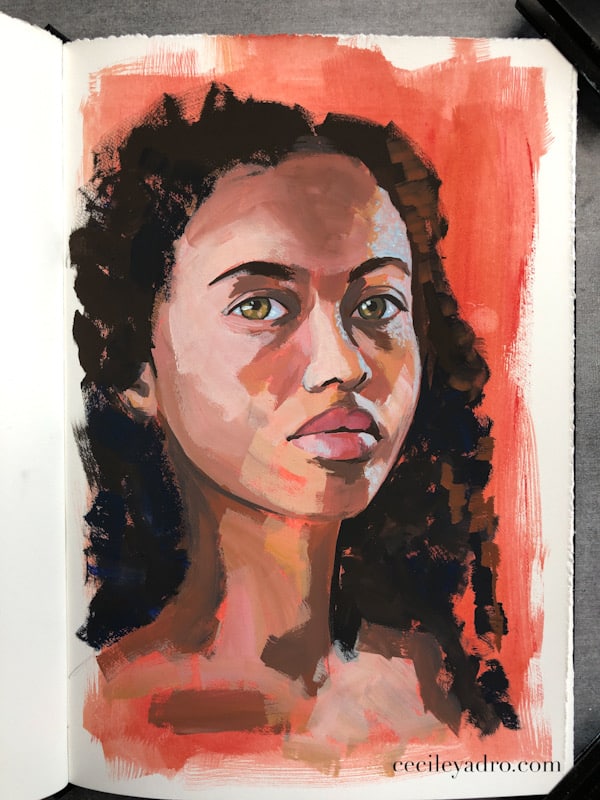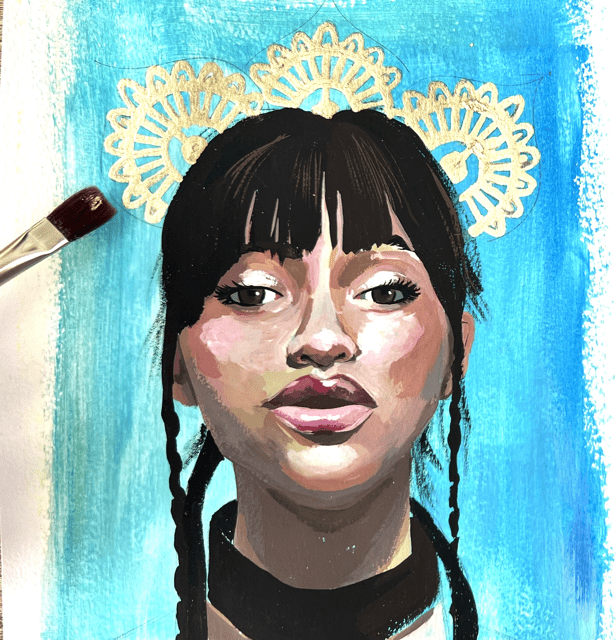Should you prime before gouache paint?
One common question in gouache painting is whether to prime your surface before starting to paint. In this post, I’ll explore the pros and cons of priming before painting with gouache and help you decide what’s best for your art. Let’s dive in!
What is priming?
Priming prepares a surface for painting by applying a preparatory coat called a primer.
Priming is typically used in painting to achieve several different goals. First and foremost, priming helps to prevent the paint from being absorbed into the surface, which can cause uneven colors and a loss of vibrancy. Priming also helps to create a uniform surface that allows the paint to flow smoothly and evenly across the canvas or paper.
In addition, priming can help ensure that the paint’s colors appear as intended and prevent any color shift that may occur if the paint were to be applied directly to the surface.
When I first started using gouache, I wasn’t sure what primer to use or even if I needed one. There are a few different types of primers available for different surfaces. The most common ones for gouache painting are:
- acrylic gesso, transparent or colored,
- watercolor ground,
- watercolor paint,
- acrylic ink
- acrylic paint.

Pros of priming before painting with gouache
I’ve found several benefits to priming before painting with gouache. First, priming creates a smooth surface for painting and prevents paint absorption into the surface. This helps ensure that your colors stay vibrant and consistent throughout your artwork.
Another great advantage of priming is the overall color of the final artwork. If you’re painting a portrait, you can add a first layer of intense color with acrylic ink or paint. This will give an undertone to all your paintings that can be visible through the paint and provide a cohesive look for your artwork. Depending on your style, you can leave some background parts visible. This will make your painting more interesting and give a sense of depth.
If you use a first layer of watercolor before painting with gouache, the pigments will merge, and you’ll have a nice surface to paint on. You need to experiment with this, try to paint with gouache on plain and painted paper, and you’ll feel the difference!

Cons of priming before painting with gouache
Now, let’s talk about the potential downsides of priming before painting with gouache. One of the biggest cons is that priming can create an additional step and expense in the painting process. If you’re on a tight budget or timeline, you may not have the extra resources to invest in a primer.
Another disadvantage of priming is that some artists prefer the texture and absorption of certain surfaces without primer. For example, some artists may prefer the rough, textured surface of the watercolor paper without a primer because it allows the paint to bleed and blend uniquely.
Of course, there are also instances where it may not be necessary to prime before painting with gouache. If you’re working with a pre-primed surface that is already smooth and non-porous, like a canvas, you may be able to skip the extra step of applying primer altogether. Or you’re painting on wood and want to keep the texture.

Conclusion
In the end, the decision of whether or not to prime before painting with gouache is ultimately up to you and your personal preferences. If you enjoy the texture of certain surfaces without a primer or are on a tight budget, skipping this step is okay. And gouache works fine on a lot of different substrates without any primer!






